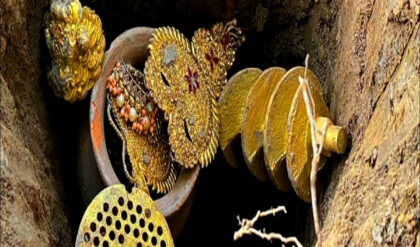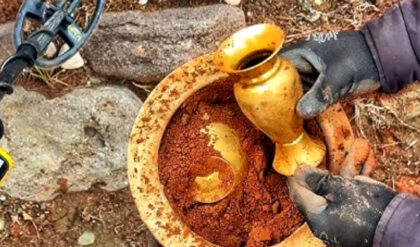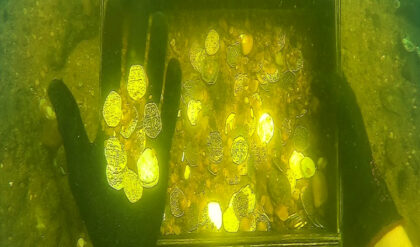Reports of ‘seven-foot-tall aliens’ terrorizing villagers in Peru stunned the world this week, with local leaders describing the ‘armored’ and ‘floating’ menaces as impervious to bullets.
The locals also compared their attackers to ‘green goblins’ and local Peruvian superstitions about ‘los Pelacaras,’ (‘the Face Peelers’) ― but now Peruvian law enforcement has offered a new suspect.
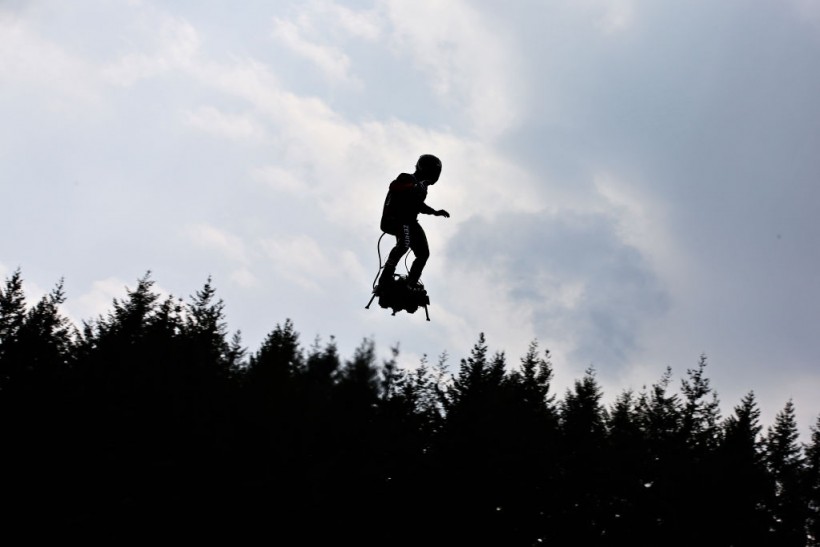
Illegal gold-mining crime syndicates, they said, are to blame: branches of the storied drug cartels like Brazil’s ‘O Primeiro Comando da Capital,’ Colombia’s ‘Clan del Golfo,’ FARC, and others who have ravaged Latin America for decades.
Peru’s National Prosecutor’s Office, which is now investigating the ‘alien attacks,’ has pointed the finger at these gold ‘mafias,’ who have been partially ejected from Brazil and Colombia by their militaries.
Now in Peru, these jetpack-flying gold cartels hope to inspire fear with their bizarre campaign of ‘alien’ terror, according to prosecutors, keeping the locals in their homes and away from the cartels’ illegal gold pits.
Prosecutors suspect that these illegal mining cartels first used their jetpacks to prospect for gold deeper into the unforgiving jungles surrounding Peru’s Nanay river.



Members of Peru’s small Ikitu population are surrounded by dense jungle in rural Alto Nanay, where gold has deposited itself like silt into the riverbeds along the Nanay river tributaries that flow into the Amazon.
The Ikitu told reporters that this summer’s ‘alien’ siege began on July 11, with locals facing vicious attacks by flying, 7-foot-tall mysterious beings in dark-colored hoods ever since.
‘These gentlemen are aliens,’ one Ikitu leader, Jairo Reátegui Ávila, told the local broadcaster Radio Programas del Perú (RPP).
‘I have shot him twice and he does not fall, but rises and disappears,’ Reátegui Ávila confessed to the local radio broadcaster. ‘We are frightened by what is happening in the community,’
But another key witness for prosecutors, a school teacher, reported seeing these eerie beings rise off the ground via much more terrestrial means.
The illegal mining cartel was using propellers and high-tech equipment, according to this teacher, Cristian Caleb Pacaya, and other prosecution witnesses. Peruvian law enforcement have described the devices as ‘jetpacks.’
‘They would be using state-of-the-art technology, such as thrusters that allow people to fly,’ Carlos Castro Quintanilla, the Peruvian government’s prosecutor investigating the case, told RPP
Pacaya, who works in the nearby San Antonio de Pintuyacu community, told news outlet RPP Noticias that he witnessed the illegal miners attempt to kidnap a 15-year-old girl on July 29.
The teenager reportedly sustained cuts to her neck and other injuries during the attempted kidnapping and is now being treated locally.
Quintanilla, Loreto’s Specialized Prosecutor for Environmental Matters, told RPP that these ‘mafias de extranjeros’ or foreign mafias operate their gold extraction enterprise out of towns in Loreto, the northmost region of Peru.
Quintanilla said that 80 percent of these illegal gold mining operations are located in the Nanay river basin, a territory northwest of Loreto’s capitol and home to the Ikitu.
As Loreto’s environmental crime watchdog, Quintanilla told the outlet that he suspects these illegal gold miners may have first used the jetpacks to explore deeper into the dense Peruvian jungle for promising new riverbed gold deposits.
‘We have investigated that these gentlemen would be using this suit to reach those places,’ he said.
By this theory, the gold cartels’ use of the jetpacks to stage their violent, otherworldly attacks would have been something of an afterthought.

The Ikitu have begged the Peruvian military to intervene amid the past month of extraordinary, ‘Scooby Doo’-esque attacks on their home in Alto Nanay.
Locals had initially described the attackers as silver-colored beings with enormous heads, who were impervious to the tribe’s hunting weapons.
‘They seem armored like the green goblin from Spider-Man,’ Ikitu leader Ávila said.
Ávila went on to describe the attackers shoes as ’round in shape.’
‘With that they rise up,’ he explained. ‘They float one meter high and have a red light on the heel.’
‘His head is long, his mask is long, and his eyes are half yellowish. With that they see you well and they leave,’ according to Ávila’s statements, as quoted by RPP.
‘They are experts at escaping,’ he said.

Unable to carry on with their daily lives in the village, which is approximately 10 hours by river from Loreto’s capital Iquitos, the Ikitu have now organized night patrols to hunt down their high-tech attackers until Peru’s military can intervene.
Besides the ‘7-foot-tall extraterrestrial attackers’ theory, some locals referred to the groups as ‘los Pelacaras’ after the alleged organ traffickers known in the region, a winking reference to the face-peeling monsters of local legend.
While gold-mining has been part of Peru’s economy for centuries, the practice of highly unregulated, so-called ‘artisanal mining’ in the region boomed during the 2008 global financial crisis, amid a long spike in gold prices.
‘In some countries,’ according to a 2016 assessment by the international law enforcement body INTERPOL, ‘the illicit trade in gold would be more profitable than drug trafficking and seen as low risk by criminals, likely due to the strong law enforcement response to drug trafficking in the region.’
As more and more investors have fled national currencies due to market instability or inflationary pressures, the value of gold has continued to entice organized crime into expanding these illegal mining operations.
While quantifying the true value of this black- and grey-market gold has been difficult, the nonprofit Artisanal Gold Council (AGC) estimates that these activities make up about one fifth of total gold production worldwide.
‘Artisanal gold mining,’ as AGC describes it, is somewhere between a $30 billion and $40 billion industry all by itself.
Illegal, unregulated and ‘artisanal’ gold miners produced approximately 500 metric tons annually as of AGC’s 2023 estimates, steady growth from the roughly 330 metric tons that this nebulous gold mining underworld produced in 2011.
Peru is currently the largest gold producer in Latin America, unearthing about 150 metric tons of ‘artisanal gold’ every year, by AGC’s analysis.
The devastation and pollution caused by these gold cartel operations have become so expansive that their impact on the Peruvian jungle can be seen from space.
On Christmas Eve 2020, one astronaut was able to photograph eastern Peru’s glittering gold prospecting pits while orbiting with the International Space Station.
As later explained in a post by NASA’s Earth Observatory, these gold prospecting pits are comprised of hundreds of tightly packed water-filled basins, carved out of deforested and de-vegetated flats of mud.
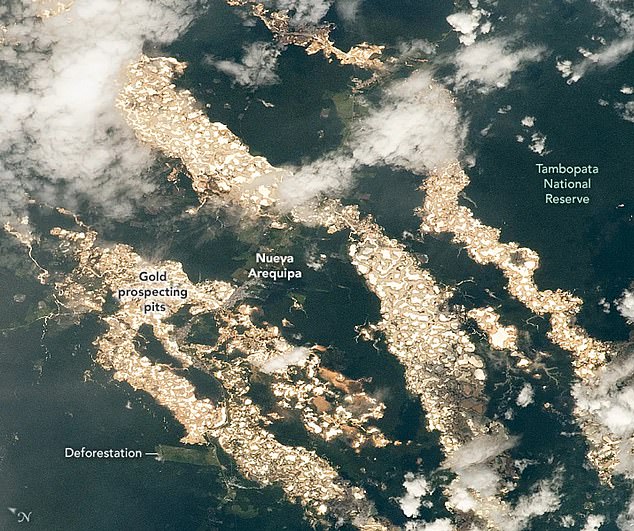
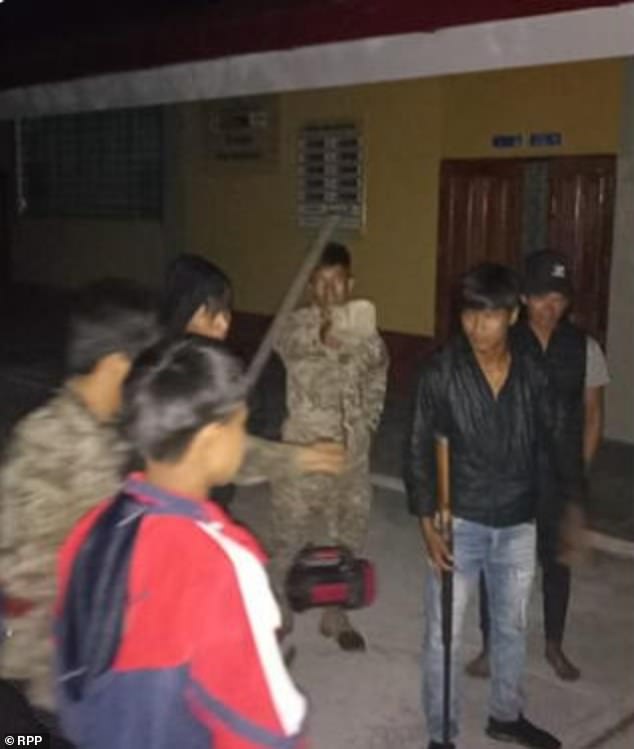
Environmental regulators, local citizens and many others have expressed concern over how these illegal gold miners use mercury, and its no-less-toxic sister compound methylmercury, to separate gold ore from the surrounding soil.
Mercury, synonymous in Victorian times with ‘mad hatters,’ is a potent neurotoxin which can ravage local wildlife, plant life and people as it seeps into ponds, waterways and underground aquifers.
Worse still, once that pure mercury is in the soil and the water, bacterial and microbial processes inevitably convert it into super-toxic methylmercury, allowing it to persist and furthering its damage.
From orbit, however, the illegal gold pits gleam in an otherworldly, ominous kind of beauty while reflecting the sun’s rays.
South of Loreto, in the region or ‘department’ of known as Madre de Dios, the Peruvian government declared a ‘state of emergency’ in 2019 ― deploying 1,500 police and soldiers to crack down on criminal gold mining.
According to a 2022 USAID report, the Madre de Dios area alone had roughly 6,000 gold miners working with formal permission from the Peruvian government.
But nearly six-times more, about 40,000 illegal gold miners, were also operating in Madre de Dios by USAID’s estimates.
So far in 2023, Quintanilla and his Environmental Prosecutor’s Office in Loreto report that they have managed to destroy 110 illegal gold dredges and 10 mining camps.
This past weekend, Peruvian Navy fighters faced fire with illegal miners near the Pucaurco and Alvarenga communities, RPP reports, where they succeeded in destroying oil drums, a gold-pit water suction system, and other equipment used by the criminal gold miners.
But no jetpacks were reported as recovered from those weekend raids.
